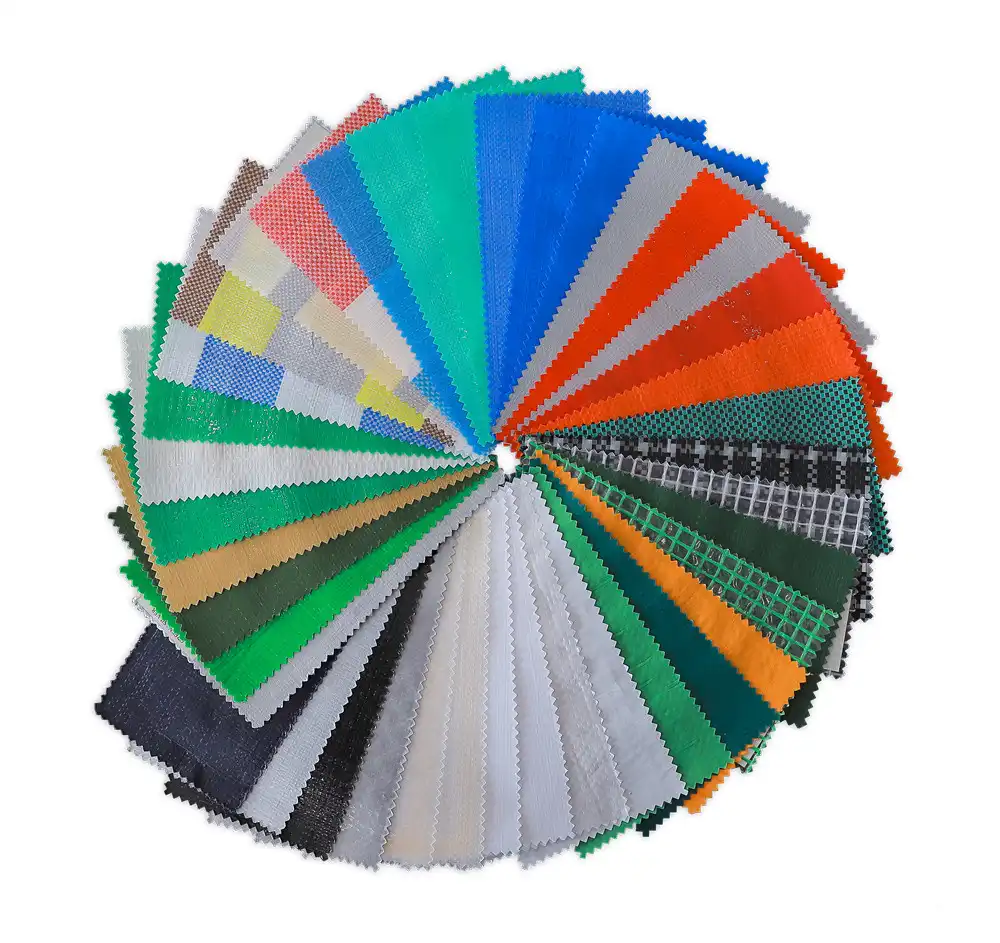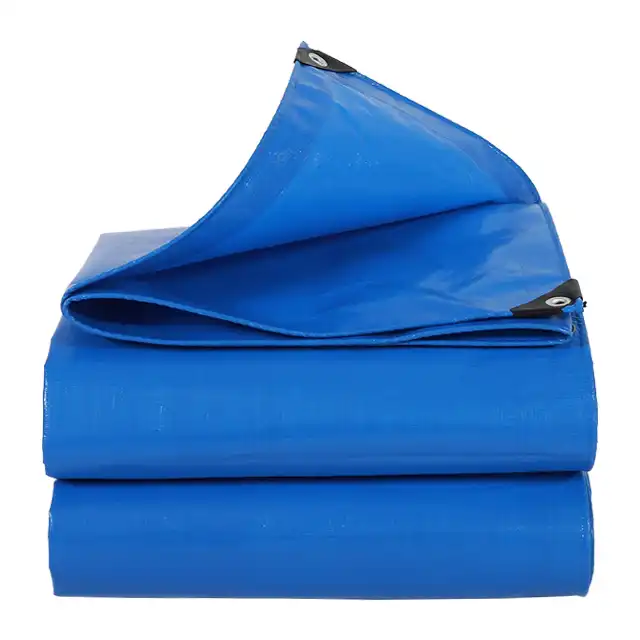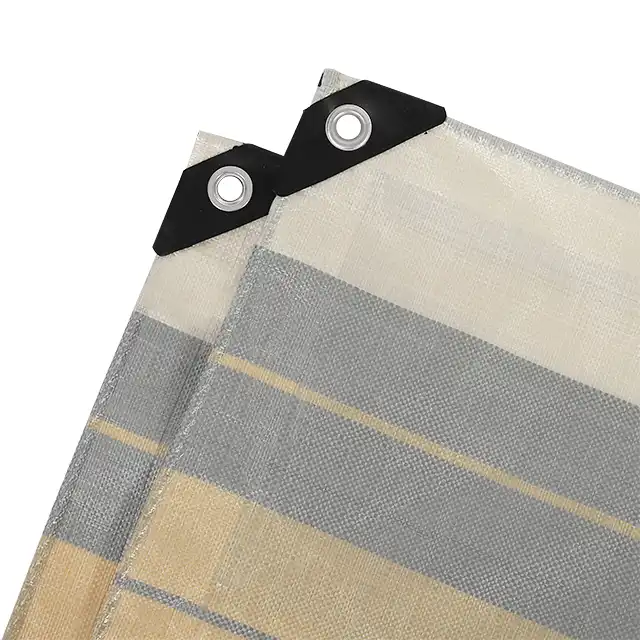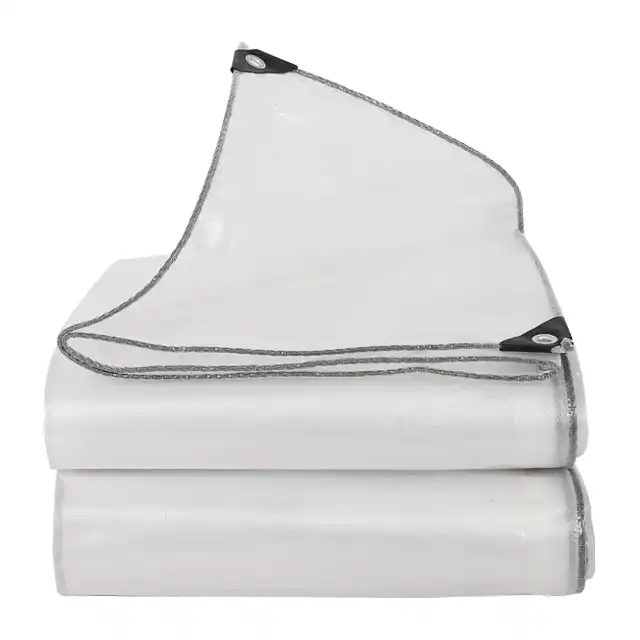How to Use Tarps for Emergency Situations?
When disaster strikes without warning, your family's safety depends on immediate action and reliable protection. Whether facing sudden roof damage from storms, flooding threatening your property, or needing emergency shelter after evacuation, an emergency tarp becomes your lifeline against the elements. These versatile protective covers offer quick solutions when traditional materials fail, providing waterproof barriers, temporary roofing, and shelter construction that can mean the difference between safety and catastrophe during critical moments.
Emergency Tarp Applications for Home Protection
 When natural disasters damage your home's structural integrity, emergency tarp solutions provide immediate protection against further deterioration. Professional emergency responders and homeowners alike rely on heavy-duty polyethylene tarps to create waterproof barriers that prevent costly secondary damage while permanent repairs are arranged.
When natural disasters damage your home's structural integrity, emergency tarp solutions provide immediate protection against further deterioration. Professional emergency responders and homeowners alike rely on heavy-duty polyethylene tarps to create waterproof barriers that prevent costly secondary damage while permanent repairs are arranged.
-
Temporary Roof Repair and Water Damage Prevention
Storm-damaged roofs require immediate attention to prevent water infiltration that can cause thousands of dollars in interior damage. High-quality emergency tarp systems made from tightly woven polyethylene fibers provide reliable protection when properly installed over damaged areas. The key lies in selecting tarps with sufficient UV protection and tear resistance to withstand extended exposure while repairs are coordinated. Professional-grade emergency tarps feature laminated construction on both sides, ensuring complete waterproofing even under extreme weather conditions. Installation requires extending the emergency tarp at least two to three feet beyond the damaged area, securing it with appropriate fastening systems that won't further compromise roof integrity. The tarp should be positioned to direct water flow away from vulnerable areas, with special attention paid to chimneys, vents, and other roof penetrations that might disrupt proper drainage patterns.
-
Flood Water Diversion and Property Protection
During flooding emergencies, strategic deployment of waterproof emergency tarps can redirect water flow and protect valuable property from damage. These applications require tarps with superior puncture resistance and flexibility in cold conditions, characteristics found in high-density polyethylene emergency tarp products designed for extreme weather scenarios. Effective flood protection involves creating temporary barriers by securing tarps across doorways, windows, and other potential entry points. The emergency tarp material must maintain its integrity when subjected to water pressure and debris impact, making material quality absolutely critical for successful flood mitigation efforts.
Emergency Shelter Construction with Tarps
When evacuation becomes necessary or existing shelter is compromised, emergency tarp systems provide life-saving protection from exposure. Modern emergency tarps offer arctic flexibility and anti-corrosion properties that maintain functionality across temperature extremes, ensuring reliable shelter construction regardless of environmental conditions.
-
Basic Shelter Configurations for Emergency Survival
Constructing emergency shelter requires understanding fundamental tarp deployment techniques that maximize protection while minimizing setup time. The A-frame configuration represents the most stable emergency tarp shelter design, utilizing a ridgeline support system that sheds water effectively while providing adequate interior space for occupants and essential supplies. Professional emergency tarp products feature reinforced attachment points and high-strength yarn construction that prevents failure under wind loading. These characteristics prove essential when shelter must withstand sustained weather exposure over extended periods. The emergency tarp should be sized appropriately for intended occupancy, with larger configurations requiring additional support points to maintain structural integrity during severe weather events.
-
Advanced Shelter Techniques for Extended Use
Extended emergency situations demand more sophisticated shelter configurations that provide enhanced comfort and durability. Multi-tarp systems combine ground protection, overhead coverage, and wind barriers to create comprehensive shelter solutions using coordinated emergency tarp deployment strategies. Ground protection involves placing puncture-resistant emergency tarp material beneath the shelter area to provide insulation and moisture barriers. This prevents ground moisture from compromising occupant comfort and reduces heat loss in cold conditions. Overhead protection requires careful attention to water runoff patterns and wind loading considerations that affect long-term shelter stability.
Emergency Tarp Selection Criteria for Critical Applications
Choosing appropriate emergency tarp products requires understanding performance characteristics that directly impact effectiveness during crisis situations. Material specifications, construction methods, and feature sets determine whether emergency tarp systems provide adequate protection when lives and property are at stake.
-
Material Properties and Performance Standards
Professional emergency tarp applications demand materials that exceed basic tarpaulin specifications through enhanced durability and weather resistance features. Heavy-duty polyethylene construction with high-density weaving provides superior tear resistance compared to lightweight alternatives that may fail under stress loading conditions. UV treatment becomes critical for emergency tarp applications involving extended exposure periods. Professional-grade emergency tarps incorporate UV inhibitors ranging from one to seven percent concentration levels, providing protection against ultraviolet degradation that weakens material structure over time. This feature proves essential for roof repair applications where tarps may remain in place for weeks or months during reconstruction efforts. Waterproof performance must be absolute in emergency tarp applications, requiring laminated construction that eliminates potential leak paths through fabric weave. The combination of HDPE woven fabric with LDPE coating creates impermeable barriers that maintain integrity under hydrostatic pressure conditions encountered in flood protection scenarios.
-
Size and Thickness Specifications for Different Emergency Applications
Emergency tarp effectiveness depends heavily on selecting appropriate size and thickness specifications matched to specific application requirements. Roof protection typically requires larger coverage areas with heavier gauge materials, while shelter applications may prioritize lighter weight products that facilitate rapid deployment and relocation. Thickness measurements ranging from seven to twelve mils provide different performance characteristics suited to various emergency scenarios. Thicker emergency tarp products offer enhanced puncture resistance and durability for extended use applications, while thinner materials provide easier handling characteristics for rapid deployment situations where time is critical. Roll width capabilities up to 5.1 meters enable coverage of large damaged areas without seaming requirements that introduce potential failure points. Custom sizing options ensure optimal coverage while minimizing waste and simplifying installation procedures during emergency response operations.
Emergency Tarp Deployment Strategies and Best Practices
Successful emergency tarp deployment requires systematic approaches that account for safety considerations, environmental factors, and long-term performance requirements. Professional emergency response teams follow established protocols that maximize protection effectiveness while minimizing installation risks during crisis conditions.
-
Safety Considerations During Emergency Installation
Emergency tarp installation often occurs under dangerous conditions that require careful attention to personal safety and proper installation techniques. Roof work during storms presents significant hazards that demand appropriate safety equipment and procedures to prevent accidents during emergency response activities. Proper personal protective equipment includes non-slip footwear, safety harnesses, and protective clothing suitable for existing weather conditions. Emergency tarp installation should never be attempted during active lightning conditions or when wind speeds exceed safe working limits for elevated work activities. Team coordination becomes essential for large emergency tarp installations that require multiple personnel working in hazardous conditions. Clear communication protocols and predetermined installation sequences ensure efficient deployment while maintaining crew safety throughout emergency response operations.
-
Long-term Maintenance and Performance Monitoring
Extended emergency tarp installations require regular inspection and maintenance procedures to ensure continued effectiveness throughout the protection period. Weather exposure, UV degradation, and mechanical wear gradually reduce emergency tarp performance, making proactive maintenance essential for reliable protection. Inspection protocols should include visual examination of attachment points, fabric condition, and water drainage effectiveness. Early identification of potential failure modes allows preventive maintenance that extends service life and maintains protection effectiveness during critical periods when replacement may be difficult or impossible. Professional emergency tarp products designed for extended service incorporate anti-freezing and shrink-proof characteristics that maintain performance across seasonal temperature variations. These features reduce maintenance requirements while ensuring reliable protection throughout extended deployment periods.
Conclusion
Emergency tarp applications provide critical protection when disasters threaten homes, property, and personal safety. Professional-grade emergency tarp systems offer reliable solutions for roof protection, flood mitigation, and shelter construction that can prevent catastrophic losses during crisis situations.
Cooperate with Linyi Shengde Plastic Co., Ltd.
As a leading China emergency tarp manufacturer established in 2003, Linyi Shengde Plastic Co., Ltd. brings over 20 years of specialized expertise in producing high-quality emergency tarp solutions for critical applications worldwide. Our company's registered capital of RMB 60 million and 60,000 square meter manufacturing facility demonstrate our commitment to serving emergency preparedness needs across global markets.
Our reputation as a trusted China emergency tarp supplier stems from rigorous quality management systems that have earned ISO 9001:2015 certification and partnerships with international humanitarian organizations including UNHCR, IOM, ICRC, and UNICEF. These partnerships validate our emergency tarp products' performance in the most demanding crisis situations where lives depend on reliable protection.
As a premier China emergency tarp factory, we maintain strong research and development capabilities that have produced breakthrough innovations including ultra-wide width braiding machines, fire-resistant emergency tarp formulations, and enhanced waterproof coating technologies. Our High Quality emergency tarp products incorporate these advanced features while maintaining competitive emergency tarp price points that make professional-grade protection accessible for diverse applications.
Our manufacturing capacity exceeds 100 tons daily output through seven dedicated production lines staffed by over 1,000 trained workers. This scale ensures reliable emergency tarp for sale availability even during high-demand emergency response periods when immediate deployment is critical.
For emergency tarp wholesale requirements or custom specifications, contact our experienced team at info@shengdetarp.com to discuss your specific protection needs and receive detailed product information.
FAQ
Q: What thickness emergency tarp is best for roof repair applications?
A: Professional roof protection requires 7-12 mil thickness tarps with UV treatment and reinforced attachment points for extended weather exposure.
Q: How long can an emergency tarp remain effective as temporary roofing?
A: High-quality polyethylene emergency tarps with proper UV protection can provide reliable roof protection for 6-12 months when properly installed.
Q: What size emergency tarp is needed for family shelter construction?
A: A 12x16 foot emergency tarp typically provides adequate shelter space for a family of four with basic survival equipment storage.
Q: Can emergency tarps be reused after initial deployment?
A: Professional-grade emergency tarps designed for multiple-use applications can be cleaned, inspected, and redeployed if no significant damage has occurred.
References
1. "Emergency Shelter Construction Guidelines" - Federal Emergency Management Agency (FEMA)
2. "Temporary Roof Protection Standards for Storm Damage" - International Association of Certified Home Inspectors
3. "Flood Mitigation Techniques Using Temporary Barriers" - National Weather Service Emergency Management
4. "Material Specifications for Emergency Response Equipment" - American Red Cross Disaster Services




